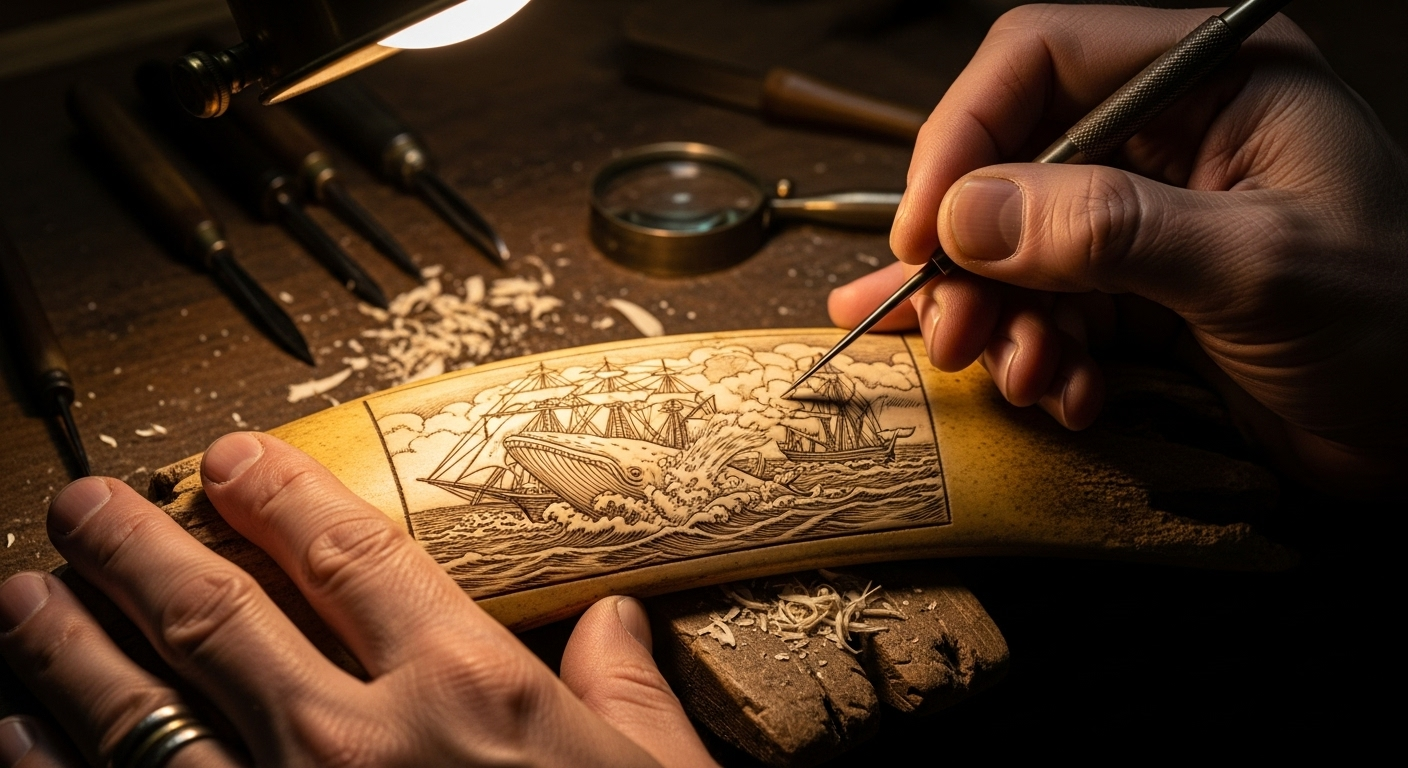Rediscovering the Forgotten Art of Scrimshaw
A resurgence of interest in the ancient maritime craft of scrimshaw is captivating art enthusiasts and collectors worldwide. This intricate form of etching on whale bone or ivory, once a staple of seafaring culture, is experiencing a modern revival. As contemporary artists breathe new life into this historical practice, we explore the rich tradition, ethical considerations, and innovative approaches shaping scrimshaw's unexpected comeback in the 21st century.

The subjects of these early scrimshaw pieces varied widely, from nautical scenes and portraits of loved ones to fanciful creatures and elaborate patterns. As whaling expeditions became less common in the 20th century, the practice of scrimshaw gradually faded from prominence, becoming a niche interest among maritime history enthusiasts and collectors.
Ethical Considerations in Modern Scrimshaw
The revival of scrimshaw in the contemporary art world has not been without controversy. The use of ivory and whale bone, central to traditional scrimshaw, raises significant ethical concerns in an era of heightened environmental awareness and wildlife conservation efforts. Modern scrimshaw artists have had to grapple with these issues, leading to innovative solutions and adaptations.
Many contemporary practitioners have turned to alternative materials that mimic the look and feel of ivory without the ethical implications. These substitutes include tagua nut, also known as vegetable ivory, as well as synthetic materials specifically developed to replicate the properties of whale bone. These ethical alternatives have allowed artists to continue the tradition of scrimshaw while aligning with modern conservation values.
Technological Advancements in Scrimshaw Techniques
While traditional scrimshaw relied on simple hand tools and basic pigments, modern artists are incorporating cutting-edge technology into their practice. Laser etching has emerged as a popular technique, allowing for incredibly precise and detailed designs that would be challenging to achieve with manual methods alone.
Digital design software has also revolutionized the planning and execution of scrimshaw pieces. Artists can now create complex patterns and images on computers before transferring them to their chosen medium, expanding the possibilities for intricate and ambitious compositions.
Scrimshaw in Contemporary Fine Art
The resurgence of scrimshaw has not been limited to traditional maritime themes. Contemporary artists are pushing the boundaries of the medium, incorporating it into fine art installations, sculpture, and even wearable art. This reimagining of scrimshaw has caught the attention of galleries and museums worldwide, elevating its status from a quaint folk art to a respected form of artistic expression.
Exhibitions featuring modern scrimshaw have highlighted its versatility and potential for social commentary. Artists are using the medium to explore themes of environmental conservation, cultural heritage, and the human relationship with the ocean, bringing new relevance to this centuries-old craft.
Collecting and Preserving Historical Scrimshaw
As interest in scrimshaw grows, so too does the market for historical pieces. Antique scrimshaw items, particularly those with provenance linking them to famous whaling expeditions or notable sailors, can command significant prices at auction. This renewed interest has also sparked efforts to preserve and study existing collections of historical scrimshaw.
Museums and maritime institutions are developing new conservation techniques to protect these delicate artifacts from deterioration. Alongside these preservation efforts, scholars are conducting in-depth research into the cultural and historical significance of scrimshaw, shedding new light on the lives and experiences of 18th and 19th-century seafarers.
The Future of Scrimshaw: Education and Innovation
As scrimshaw continues its renaissance, educational initiatives are emerging to ensure the craft’s techniques and history are passed on to new generations. Workshops and classes in scrimshaw are becoming increasingly popular, attracting diverse participants from art students to history enthusiasts.
Looking ahead, the future of scrimshaw seems poised at the intersection of tradition and innovation. As artists continue to explore new materials, techniques, and themes, the art form is likely to evolve in exciting and unexpected ways. The challenge for the scrimshaw community will be to honor the craft’s rich maritime heritage while embracing the possibilities of contemporary artistic expression and ethical considerations.
The resurgence of scrimshaw serves as a fascinating example of how traditional crafts can find new relevance in the modern world. By adapting to contemporary values and technologies while maintaining a connection to its historical roots, scrimshaw has carved out a unique niche in the current art landscape. As this once-forgotten maritime art continues to evolve, it offers a compelling narrative of cultural preservation, artistic innovation, and the enduring human desire to leave a mark on the world.





